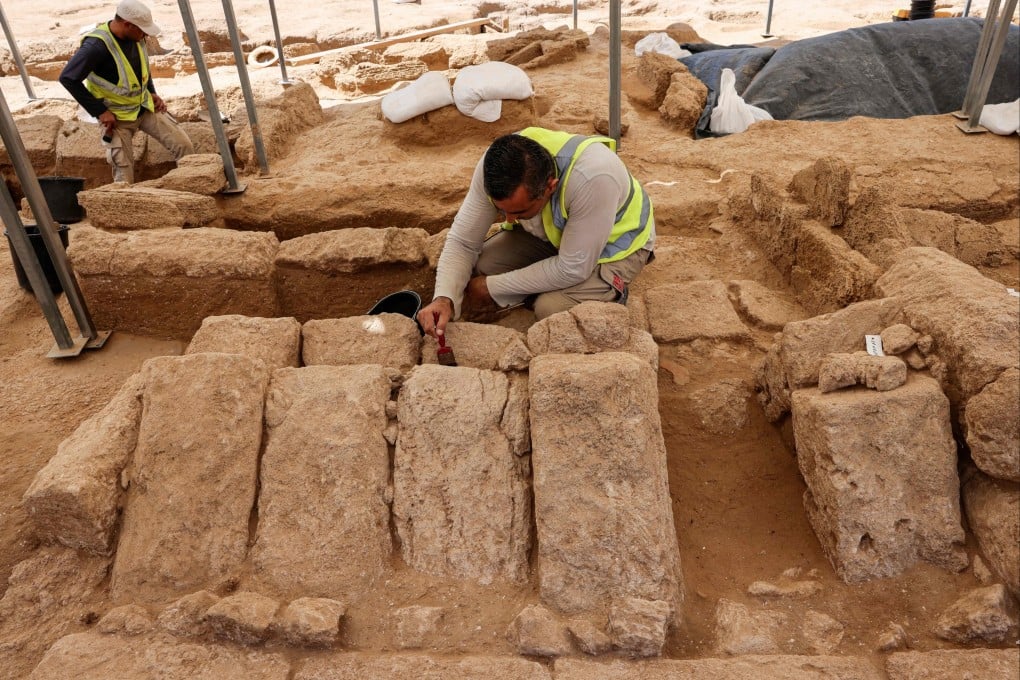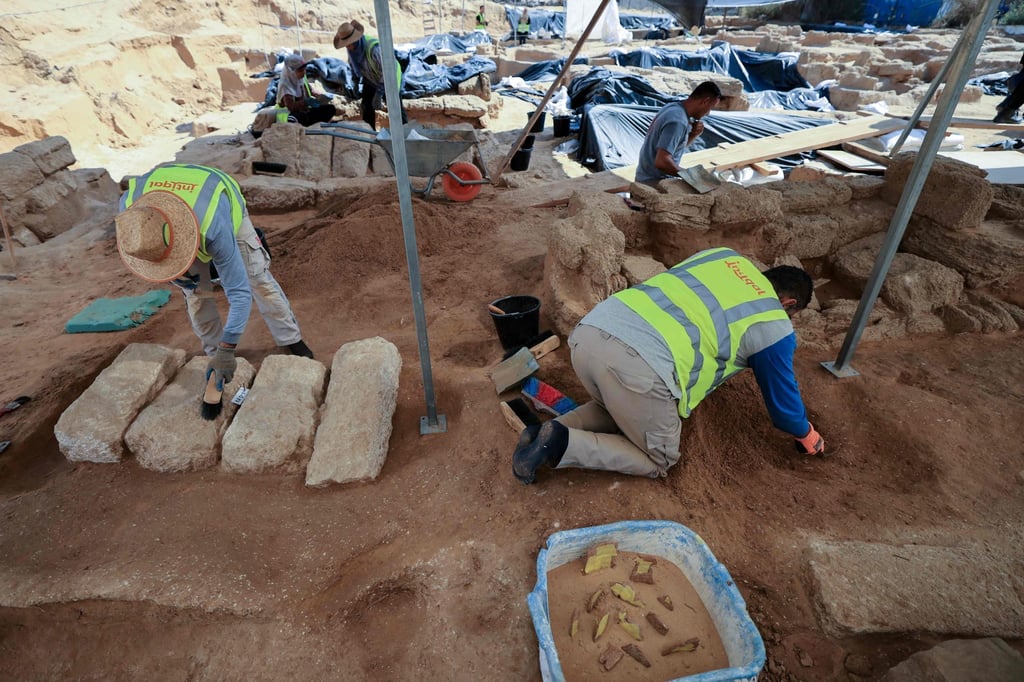Archaeologists unearth largest cemetery ever discovered in Gaza and find rare sarcophagi
- Palestinian workers found dozens of ancient graves in a Roman-era cemetery discovered near Jabaliya, in the northern Gaza Strip
- Given the rarity of the lead tombs, Palestinian archaeologists suspect that social elites are buried there. The site dates back some 2,000 years

Palestinian workers in the Gaza Strip have found dozens of ancient graves, including two sarcophagi made of lead, in a Roman-era cemetery – a site dating back some 2,000 years that archaeologists describe as the largest cemetery discovered in Gaza.
Workers came upon the site last year during the construction of an Egyptian-funded public housing estate near Jabaliya, in the northern Gaza Strip. Since then, crews have worked to excavate the 2,700-square-metre site with the support of French experts.

Now, what was once an inconspicuous construction site – surrounded by a grove of nondescript blocks of flats – has become a gold mine for archaeologists looking to understand more about the Gaza Strip.
Gaza, a coastal enclave home to some 2.3 million people, has a rich history stemming from its location on ancient trade routes between Egypt and the Levant. But a number of factors – Israeli occupation, Hamas’ 16-year takeover of the territory and rapid urban growth – have conspired to endanger many of the besieged strip’s archaeological treasures.
Against this backdrop, the discovery of 60 graves at the site in January marked a major finding, archaeologists say. That number has swollen to 135.
Rene Elter, a French archaeologist leading the dig, said researchers have studied more than 100 of the graves.
“All of these tombs have almost already been excavated and have revealed a huge amount of information about the cultural material and also about the state of health of the population and the pathologies from which this population may have suffered,” said Elter, the head of archaeology for “Intiqal,” a programme managed by the French non-profit Premiere Urgence Internationale.
